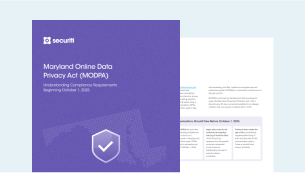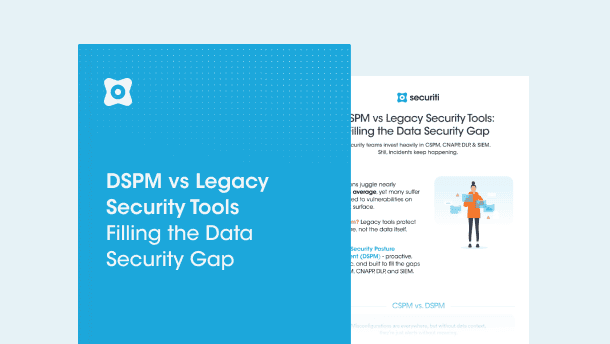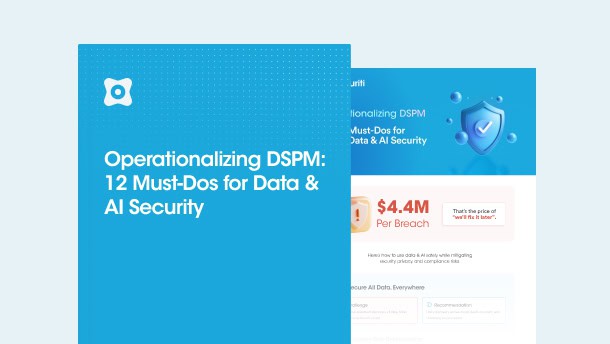Difference Between First-Party, Second-Party, & Third-Party Data
First-Party Data
At its core, first-party data is any form of data or information that an organization collects on its users. This can be via offline or online sources such as the organization's website, app, social media, surveys, or CRM.
Such data can include but is not limited to:
- Demographic details;
- Interests;
- Purchase history;
- Time spent on a particular page on a website;
- Visited pages on a website.
Since the organization collects such data on its users, it has tremendous potential and value as it can be used to create better-personalized experiences for users based on their individual interests and preferences.
As explained earlier, first-party data is collected directly via the interactions users have the organization’s app or website. These interactions include consent to receiving marketing emails or additional signup options such as Facebook or Gmail account logins.
Second-Party Data
Second-party data is reasonably easy to understand. It is the first-party data of another organization. Owing to strategic partnerships, agreements, and consent from the users themselves, organizations may choose to share their first-party data with other organizations.
Often, such second-party data is leveraged from other organizations whose users may strongly correlate with an organization's own users, such as a fast food organization partnering up with a food delivery organization to understand how users use the second service to buy their products.
In other words, second-party data is first-party data that belongs to another organization. Such data is shared between organizations as part of any contractual agreement they may have with one another.
Third-Party Data
Third-party data is by far the most readily available data organizations can leverage. More importantly, this category's data scale can be ten-fold or even higher than first-party or second-party data. Essentially, third-party data includes all forms of data, such as their interests, demographics, smartphone model, location, browsing patterns, and purchases.
Most third-party data is collected from data vendors, data marketplaces, and data-as-a-service (DaaS) organizations.
Third-party data has distinct benefits as it lets marketers know which websites their users frequently visit and which ads get the most attention. This can give rare insights into which products will likely yield the best conversions.
The possibilities with third-party data are endless owing to the sheer volume and variety of data that it promises.
Use Cases of First-Party Data with Examples
It carries tremendous benefits. It can be leveraged to deliver insights that can be viral in improving an organization's overall marketing efforts. Some of these ways include:
Precision Marketing
First-party data allows organizations to become as efficient as possible with their marketing efforts. Doing so not only carries the apparent benefit of saving organizations thousands if not millions of dollars in needless expenses on efforts that do not carry the sufficient promise of success but also more accurately identifies how their users behave and react to their marketing efforts across various devices and channels.
As a result, organizations can ensure their marketing efforts are more relevant and tailored to deliver the best ROI.
Personalized Customer Journeys
One of the first-party data's most important benefits is its effectiveness in helping organizations map their customers' journey across the board by discovering various steps a user may take before, during, and after their purchase.
These insights can be leveraged to ensure the user is shown the right message at precisely the right time, place, and manner to increase their chances of conversion.
Omnichannel Measurement
With so much interconnectivity, users are more empowered than ever before. However, for organizations themselves, this can cause issues in terms of measuring their users' overall journey since a user may view the product on one device, add it to their cart on another, and finally choose to checkout on another.
First-party data allows organizations to consolidate the entire omnichannel user journey and measure it both accurately and wholly to aid their strategies leading to better chances of success and conversions.
Relevant Intelligence
Business Intelligence has become an increasingly important tool for organizations. It has evolved from being a support unit into a functional requirement. Effective business intelligence can give organizations a competitive advantage over their direct rivals.
First-party data ensures organizations have the most relevant and accurate information for their messaging and customer experience curation. The better an organization understands its users, the better they'll be able to create customized experiences per their specific purchase patterns, preferences, location, etc.
First-Party Data Amidst Data Privacy Laws Era
It can be gathered without additional cost, and the organization that holds the data obtains this information with the customer’s consent, which is crucial in the age of privacy laws, such as the European Union’s General Data Protection Regulation (GDPR) or the California Consumer Privacy Act (CCPA).
First-party data is the easiest data to utilize and demonstrate consent since organizations can explain when and how consumers agreed to have their data collected. Like the GDPR, the CCPA demands that businesses demonstrate that their data collection practices are lawful and transparent. This is made simpler and more visible by using first-party data.
Some data protection laws, like the GDPR, require opt-in consent. It means that GDPR-regulated businesses must first obtain the consent of the users for data collection and processing. More importantly, the updated European Data Protection Board (EDPD) guidelines restrict businesses from using pre-ticked boxes since it is not a valid method to obtain consent.
Some other data privacy laws, such as the CCPA or CPRA, require opt-out consent. Opt-out consent means that businesses can collect data by default, but they must provide visitors with a mechanism to opt-out of data collection, such as by providing an opt-out button at the footer of their website.
Learn more about opt-in consent vs. opt-out consent.
First-party data is one of the most important types of data. Thus, every business should consider gathering it and leveraging it. More importantly, it is now even more critical for businesses as Google declared that third-party cookies would gradually be removed from Chrome browsers by 2022 (delayed to 2024).
Concerns about data security and privacy rank among the principal obstacles marketing faces when trying to improve the effectiveness of advertising. Business and financial hazards emerge with improper handling of user data. When these laws are broken, there are serious repercussions. For instance, fines under the GDPR alone can reach 20 million euros, or 4% of your annual revenue (whichever is higher).
First-party data makes it simpler for businesses to adhere to requirements as users typically consent to the processing of their data when they proceed to browse websites and apps or make transactions.
How is First-Party Data Collected?
Most websites collect data on their users. Any data collected on their own website or app on a PC, mobile, tablet device is considered first-party data. In most cases, this data is collected via the use of cookies. These cookies are smartly designed pieces of code that collect information about each visiting user, such as the language the access the website, the device they use, their region, what OS they have installed, their phone number, IP address, etc.
While data regulations put certain obligations on organizations when collecting this data, any organization can continue to collect it as long as they have the users’ informed consent. This data can then be used to personalize a user’s experience on the site or the app and improve their experience.
Challenges Using First-Party Data
However, first-party data carries its own unique challenges. More often than not, appropriately identifying and prioritizing these challenges is the first step toward leveraging the maximum potential from this data. Some of the most obvious challenges posed by using first-party data include the following:
Data Quality
Data is one of those specific assets where quality matters much more than quantity. This assertion is backed up by IDC Market Research and Gartner's research, which indicate organizations potentially lose 20-30% of their annual revenue due to ineffective data management. Loses that end up costing organizations millions.
This is because, owing to how data is managed internally by an organization, specifically the various units or departments, the collected first-party data may develop discrepancies.
A typical example is the customer data from the sign-up section to the billing systems.
Inefficient management usually compromises the data, and as a result, the customer may not be billed. Imagine that on a scale of thousands of customers or millions.
Data Silos
Organizations need to understand the true extent of this particular challenge. Due to various business units working within an organization and the thousands of interconnected systems, data silos are bound to prop up.
These silos then hinder an organization's ability to drive maximum efficient value and insights from this data as each unit works on its distinct understanding of data. A "single source-of-truth" or centralized data source is the only way to create an ecosystem that can cater to these units' distinct needs without compromising their ability to achieve their goals.
Limited Scale
As a result of stricter data privacy regulations being drafted globally, most organizations may no longer be able to rely on the endless streams of data from multiple sources as before. In such a future, first-party data represents an organization's best chance to assess the best strategies to cater to its customers.
However, it will bring challenges, such as the limit in scale. As mentioned earlier, most modern attribution models rely on excessive data inputs. First-party data brings a significant cap on the scale of data being collected that will require organizations to rethink how they curate customer experiences online and how they evaluate the insights gained from this data.
Cost
Yes, first-party data is an invaluable resource. However, there's a flip side to that coin. Appropriately using and leveraging this resource requires the right technology, processes, and personnel. Technology, processes, and personnel will require a tremendous commitment in terms of resources.
This is one of those problems that may not similarly affect each company owing to a gulf in the resources they can spend on the requirements necessary to leverage first-party data. A multi-billion dollar conglomerate may not have that problem compared to a start-up.
However, organizations that need to consider the potential costs in a slightly more delicate manner must understand that maximizing first-party data is costly, both in terms of time required and resources spent.
What is Zero Party Data, and How is it Different from First-Party Data?
Understanding Zero party data can be complicated owing to just how recent the term is and the slight similarities it may share with first-party data. However, there is a difference, and understanding that difference is critical for organizations hoping for regulatory compliance.
In short, zero-party data is the data that a customer freely and often proactively shares with a website. This can include their preferences or how they wish their interaction with the website to be like.
For example, a customer responding to a question on how often they would like to receive marketing information in their emails or what kind of content they would like to see most. Various websites, be it e-commerce sites or social media usually present customers with such choices immediately after they sign up.
The answers to these questions constitute zero-party data and are used almost exclusively to personalize a user's experience on a particular site right from the start.
Global privacy regulations have created a situation where organizations must proactively approach consent from their users at different phases of their user journey. Appropriate use and collection of zero-party data can help lay a foundation for regulatory-compliant data processing.
Unlike other forms of data, zero-party data is accurate beyond any measurable doubt since its only origin is the user. The simple nature of the data collected, a simple yes or no, makes it easier to use without requiring additional context.
Automate First Party Consent Preferences with Securiti Privacy Center
Making sure data responsibilities are properly carried out can be a time-consuming and labor-intensive task. Automation is, therefore, not only the most effective means to ensure first-party data consent but also the most efficient.
When it comes to offering autonomous business solutions for data privacy, security, governance, and compliance, Securiti has established itself as a revolutionary and a front-runner. Many renowned and reputable businesses rely on Securiti’s array of privacy-focused solutions to guarantee adherence to data regulations worldwide.
With Securiti’s Privacy Center, businesses can eliminate complexities and seamlessly automate all their key privacy functions, such as privacy notices, cookie management, consent preferences, Do Not Sell and Do Not Track signals, and individual privacy rights.
By automating first-party consent preferences, businesses can provide personalized preference experiences to their users and, thus, increase opt-in rates significantly.
Organizations of all sizes can capture and manage real-time consent activity by creating specialized ways to collect consent from various sources, such as websites, online forms, SaaS applications, and consent databases.
Sign up for a Free Trial now- no credit card is required.
Additionally, intuitive dashboards help visualize consent at the visitor and organizational levels for sheer transparency. Organizations can also record consent information from each location where data is collected, together with the timestamp, the policy, and the source.
The tool enables organizations to organize consent processes at a large scale and increase customer trust throughout the relationship. For a great user experience, rapidly capture queries, honor consent settings, and utilize a streamlined, guided approach to manage consent revocation and automatically preserve a consent compliance audit trail.
Request a demo today.













































